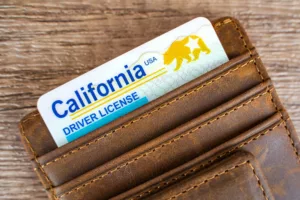How to Drive Safely on the Highway

Driving on the highway is something that many of us do nearly every day. Yet besides the few hours of Driver’s Education classes that most of us took when we were teenagers, highway driving safety is a topic that’s rarely discussed. With the number of traffic fatalities continuing to rise at an alarming rate, it’s a topic that warrants revisiting. In this article, we’ll discuss some highway driving safety tips so that you and your loved ones can safely make it to your destination.
In This Article
Know the Purpose of Each Lane
Keep a Safe Following Distance
Keep the Lane Changing to a Minimum
Know the Purpose of Each Lane
When driving on a 3 or 4-lane highway, it’s important to know the true purpose of each lane. While most people refer to the left-hand lane as the “fast lane”, that is actually not the case. The left-most lane is actually the “passing-lane” and should only be utilized when passing vehicles (with exceptions for left-hand exits). In fact, in some states it is illegal to “camp” in the left-hand lane and law enforcement officers could issue a citation.
The middle lane or lanes are designated as the “travel lanes.” These are the lanes that drivers should be spending the majority of their time in. If you’re cruising along with no need to pass and no plans to exit, this is where you should be located.
The right hand lane, commonly referred to as the “slow lane,” has two purposes. It is the lane that you’ll want to position yourself in when approaching your exit, and it is also the lane that you’ll want to utilize in situations where you’re going to be traveling slower than the other traffic.
Keep a Safe Following Distance
We have all been in situations where another driver is following right on our tail. Oftentimes, it leads to anger and maybe some impolite gesturing. But in more serious cases, tailgating can actually lead to devastating accidents. When driving on the highway, be sure to give the vehicle in front of you ample space. Experts suggest employing the 3-second rule. To check whether or not you’re following too close, pick out a landmark such as a sign or a lamp post. When the vehicle in front of you passes the landmark, begin counting. If it takes you less than 3 seconds to reach that same spot, then you’re too close and should back off. However, keep in mind that the 3-second rule is designed for ideal driving conditions. In less than ideal conditions such as inclement weather or sun glare, you will want to give vehicles in front of you a wider berth.
Keep the Lane Changing to a Minimum
When traveling on the highway, it’s not uncommon to see drivers continuously changing lanes, desperately trying to pass every car that’s in front of them. While lane changes are necessary, it’s important not to go overboard. Try to keep your lane changing to a minimum when at all possible. However, if you do need to make a lane change, be sure to do so safely. Before you begin to slide the vehicle to the right or left, you should signal your intentions to other drivers by utilizing your turn signal. Then, be sure to check your mirrors to make sure that the coast is clear. Don’t forget to check your blind spots as vehicles may oftentimes be out of the view of your mirrors. Once safe to do so, change into your new lane. Don’t forget to turn off your blinker once your lane change is complete. Forgetting to do so can cause confusion for other drivers.
Ready to wave goodbye to fleet management headaches?
Let Motorlease take the wheel! Our fleet experts will handle all your vehicle needs. Experience the joyride of turnkey fleet management!Categories


